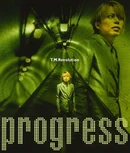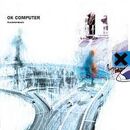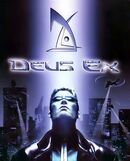Gen X Soft Club was a popular aesthetic in the Late-1990s to Late-2000s, branching from the popular Cybercore movement of the time. It is considered a more natural and "down-to-earth" look at futurist optimism of the time. It's characterized by urban typography, a use of plants/nature, underground metros/train stations, airports, city skylines, and a heavy use of minimalism/cool color schemes.
Origins[]
GXSC's popularity between the years 1996-2002 was a movement in futurist aesthetics that spawned from the economic recovery and growing technology industry of the 1990s. Some had criticisms about the overly-optimistic, "bubblegum" styles of Cybercore and McBling. A notable shift in the visual mood of these styles happened during the turn of the millennium, mainly between older members of the Millennials/Generation X groups.
Comeback[]
Today, the aesthetic is making a comeback as styles like Cybercore and Frutiger Aero returning to the public eye in the 2020s. Artists like George Clanton, CFCF and Doss overlap a lot with GXSC, and push forward with the style to this day.
Visuals[]
GXSC uses a mix of contemporary urban minimalism and lifestyle with Cybercore elements, along with the heavy use of Lomo effect (an analog cross-processing method creating saturated, high-contrast, "soft" looking photos), bleach bypass and blur technics in photography, and natural and muted colors - especially greens, blues, beiges, tans, greys, and black. There are also elements of 60s and 70s nostalgia, which were most common with Generation X.
Fashion[]
Following trends with the rest of the visual identity of the aesthetic, the fashion of GXSC is inspired by Cybercore's fashion with a much more muted, softer appearance. Some fashion trends include nude lipstick, middle parts or natural textured hair, natural leathers, knee high boots, duster jackets, and other alternative/grunge streetwear styles.
Media[]
Movies[]
- Chungking Express (1994)
- Fallen Angels (1995)
- Trainspotting (1996)
- Gattaca (1997)
- Happy Together (1997)
- Nowhere (1997)
- Sliding Doors (1998)
- Wonderland (1999)
- The Beach (2000)
- Requiem for a Dream (2000)
- A.I. Artificial Intelligence (2001)
- Millennium Mambo (2001)
- Vanilla Sky (2001)
- L.I.E. (2001)
- One Hour Photo (2002)
- Resident Evil (2002)
TV Shows[]
- MTV Chill Out Zone (90s)
- MI-5 (2002)
Anime[]
- FLCL
- Eden of the East
- Serial Experiments Lain
Webfiction[]
- Orion's Arm (2000-)
Games[]
- Racing Lagoon (1999)
- Roommania #203 (2000)
- Assassin's Creed (2007)
- Portal series (2007-2011)
- Mirror's Edge (2008)
Music[]
Gen X Soft Club, while being mostly a visual aesthetic, is highly associated with music. Many examples of the aesthetic come from album covers and music videos. While Gen X Soft Club is commonly associated with Downtempo and its Trip Hop subgenre, other Electronic and Rock genres can be included in the aesthetic. Here are some examples:
Acid Jazz[]
- Jamiroquai
Breakbeat[]
- The Chemical Brothers
- Cornelius
- Fatboy Slim
- The Prodigy
Downtempo/Trip-Hop[]
- Air
- Björk
- CFCF
- DJ Shadow
- DNA
- Everything But the Girl
- I Monster
- Madonna
- Massive Attack
- Moby
- Portishead
- Röyksopp
- Tricky
- Sneaker Pimps
- Unkle
- Hikaru Utada
- Charles Webster
House[]
- Basement Jaxx
- Crystal Waters
- Leftfield
- Moloko
IDM[]
- Aphex Twin
- Architect
- Autechre
- Boards of Canada
- Mike Paradinas (μ-Ziq)
- Plaid
- Squarepusher
Rock/Alternative[]
- American Football
- Blur
- Nine Days
- Radiohead
- Savage Garden
- Spiritualized
- Stereo MC's
- U2
Trance[]
- BT
- DJ Sammy
- Ratty
- Underworld
Music Videos[]
- "Aerosol" by Jens Buchert
- "6 Undergound" by Sneaker Pimps
- "100% Pure Love" by Crystal Waters
- "Angel" by Massive Attack
- "The Power of Goodbye" by Madonna
- "Virtual Insanity" by Jamiroquai
Resources[]
External links to help get a better understanding of this aesthetic.
Communities[]
Playlists[]
- Gen-X Soft Club by cartervon*
- gxsc/y2k chill playlist by djdomm2015
- huge gen x/soft club masterpost! by totallycooldad

























